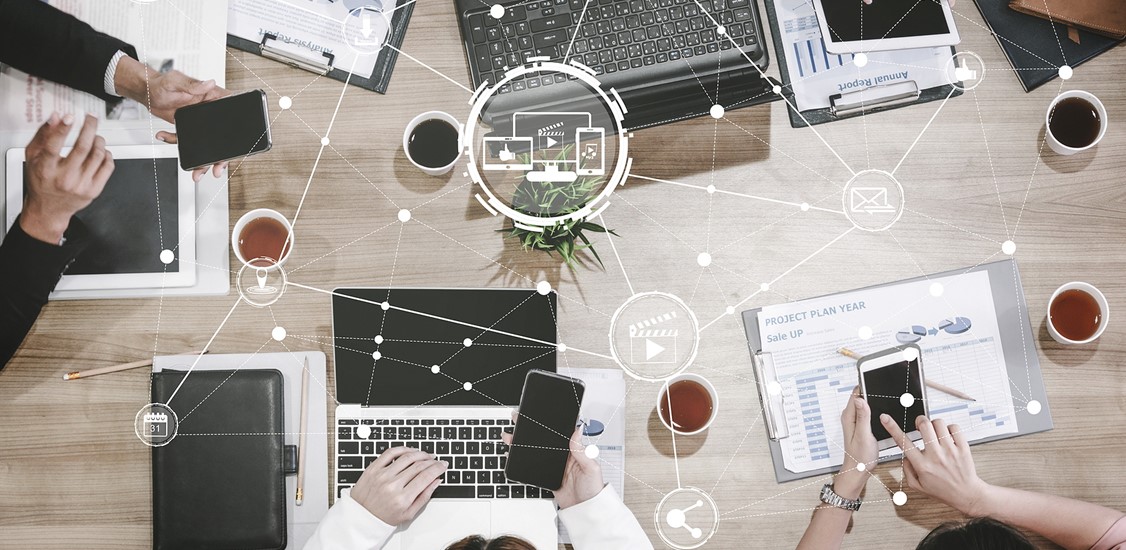After the pandemic, the rigid boundaries of the traditional office environment changed forever. The 9-to-5 grind gradually made room for flexible workstyles that prioritized remote work, freelancing, and a dynamic blend of in-person and virtual collaboration.
In this evolving terrain, employees are all about doing their work intuitively and efficiently. They have strong preferences about what kind of tech they want to use and how to use it. Regrettably, organizations that have not readied themselves for this digital metamorphosis find themselves grappling with workforces that are more willing to search out positions that offer a harmonious work-life equilibrium.
On the other hand, enterprises that neglect to recalibrate their cybersecurity to suit flexible workplace culture inadvertently make themselves cyber targets. Why? Because companies have more endpoints and vulnerable connections than ever before. Since 2020, businesses have witnessed a series of attacks that now stand atop the list of history’s most catastrophic cyber incursions.
These recurrent episodes underscore the stark digital reality of today – companies must deliver flexible cybersecurity capable of enhancing the digital employee experience. Let’s explore how.
Balancing security and employee experience
In contrast to the 2000s, when Microsoft held sway over the workplace, the present landscape has undergone a significant transformation. Though Windows retains its stature as the reigning operating system, alternative platforms with distinctive perks have carved out their niche in the market. For instance, Linux systems, characterized by their open-source nature, offer multiple benefits, and MacBooks are renowned for their low susceptibility to bugs and viruses.
In tandem with this diversity, the bring-your-own-device (BYOD) trend injected a considerable array of devices into the mobile ecosystem. While BYOD’s financial sensibility resonated with enterprises, striking a balance between security, privacy, and productivity wasn’t a walk in the park.
This massive influx of endpoints poses challenges at multiple facets. Primarily, IT admins are tasked with the responsibility to continuously monitor, protect, and update every device spanning from Windows desktops and MacBooks to Android phones, Apple TVs, and an array of connected devices.
Moreover, the requisite security protocols for each operating system are distinct. For example, Windows exhibits vulnerabilities in terms of application security, rendering it more susceptible to malware and cyber threats compared to macOS. Conversely, Microsoft stands out for its prompt release of security patches, setting it apart from Apple.
However, the evolution of unified endpoint management (UEM) markedly streamlines device oversight. For example, Forrester’s Q3 Unified Endpoint Management Landscape Report defines UEM as a means to improve digital employee experience and reduce endpoint management overhead. As a result, the report – which lists market-leading vendors such as Hexnode – notes that UEM helps businesses set a strong foundation for threat prevention.
This is possible since UEM allows organizations to remotely onboard devices and push applications based on user requirements. While lightweight remediation capabilities like device wipes and remote troubleshooting are staples of UEM products, the focus is on threat prevention by mastering the basics of device inventory, policy configuration, and patch management.
Currently, UEM assumes an integrative role alongside other endpoint security tools like Endpoint Detection and Response (EDR) and Endpoint Protection Platform (EPP). Moreover, the gradual integration of advanced technologies like generative AI enhances UEM’s managerial capabilities.
Crafting enterprise-friendly strategies
Conventional cybersecurity parameters relied on the castle and moat concept involving closed networks and perimeter-based infrastructure. However, as servers migrated beyond physical confines, operations moved to the cloud and devices dispersed across various locations. Consequently, these perimeter-based techniques that once fortified physical office spaces no longer suffice.
The decentralized IT landscape necessitates a shift toward segmented approaches. In response, businesses are turning to the zero trust security model, a concept that hinges on authenticating, authorizing, and validating users based on identity. It’s a cybersecurity method that is gaining ground at all levels. In fact, The White House has directed government agencies to adopt a “never trust, always verify” approach by September 2024.
Complementing zero trust architecture, Identity and Access Management (IAM) solutions consider the who, what, why, and when before granting access to corporate resources. Gartner has emphasized the significance of a collaborative cybersecurity mesh architecture, where tools can work together to elevate security standards. Leveraging the Software-as-a-Service (SaaS) nature of frameworks such as UEM, IAM, and zero trust, organizations can assemble these pieces like a puzzle, creating a harmonious blend of solutions that yield robust cybersecurity defences.
Additionally, tools like extended detection and response (XDR) and security information and event management (SIEM) aid in the monitoring of potential threats targeting an organization’s devices, amplifying the chance of identifying zero-day vulnerabilities.
With hackers getting more ambitious, the chances of successful attacks are on the up. Failing to meet the required benchmarks for attack prevention has contributed to this trend. However, as the adage goes, prevention is better than cure, and the imperative now is to cultivate resilience against attacks. This involves adopting an attacker’s mindset, predicting their next moves, and reinforcing defences accordingly. Rather than merely containing threats, the goal is to pre-emptively thwart them before they manifest. To this end, businesses must establish solid incident response plans. These plans outline the steps an organization should take before, during, and after an actual or potential security breach on any of its systems.
Embracing the future of work
To truly embrace the future of work, businesses must improve the digital experience of employees while keeping them (and the organization) cyber-safe. Clearly, this is no mean feat, but it’s vital to get right. The level of efficacy with which an employee engages with their technology has a dramatic influence on how proficient and productive they can be within their specific role.
Gartner in this article introduces the concept of digital employee experience (DEX) as a discipline that examines how technology impacts the total employee experience. This approach involves addressing a set of pertinent inquiries: How do employees interact with technology? What is the degree of security associated with accessibility? Is the management process streamlined? Based on the analysis, the company receives its ‘DEX score’ that measures employee satisfaction with their digital tools and technologies.
The process of approaching DEX begins with ensuring seamless device onboarding, availability of a unified app catalogue, and enabling personalized communication across any device along with other services necessary for flexible working. The employee experience is then measured based on device performance, connectivity, application performance, and user sentiment. Then, issues affecting the DEX score are analyzed and remediated.
Therefore, DEX done right translates to a seamless work experience. Security operates unobtrusively in the background, automating processes without necessitating employee intervention. Meanwhile, credentialing processes are fluid, and connectivity is assured. Apps and programs are intuitive. Moreover, it lowers instances of Shadow IT, where departments tend to deploy technology unauthorized by IT.
In this day and age, tech leaders must provide the best digital employee experience possible to ensure high levels of productivity, engagement, and satisfaction and lower levels of turnover. Then, and only then, can they meet the dual demands of flexible workplaces and flexible cybersecurity. Their business output and employee satisfaction depend on it.






















